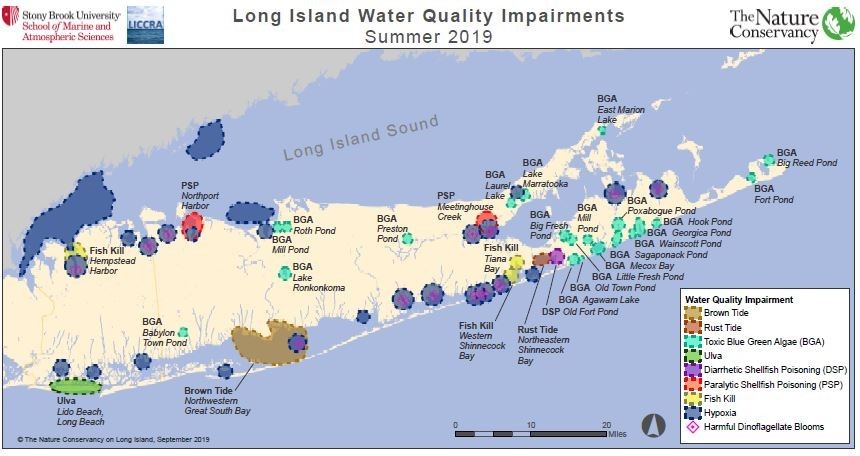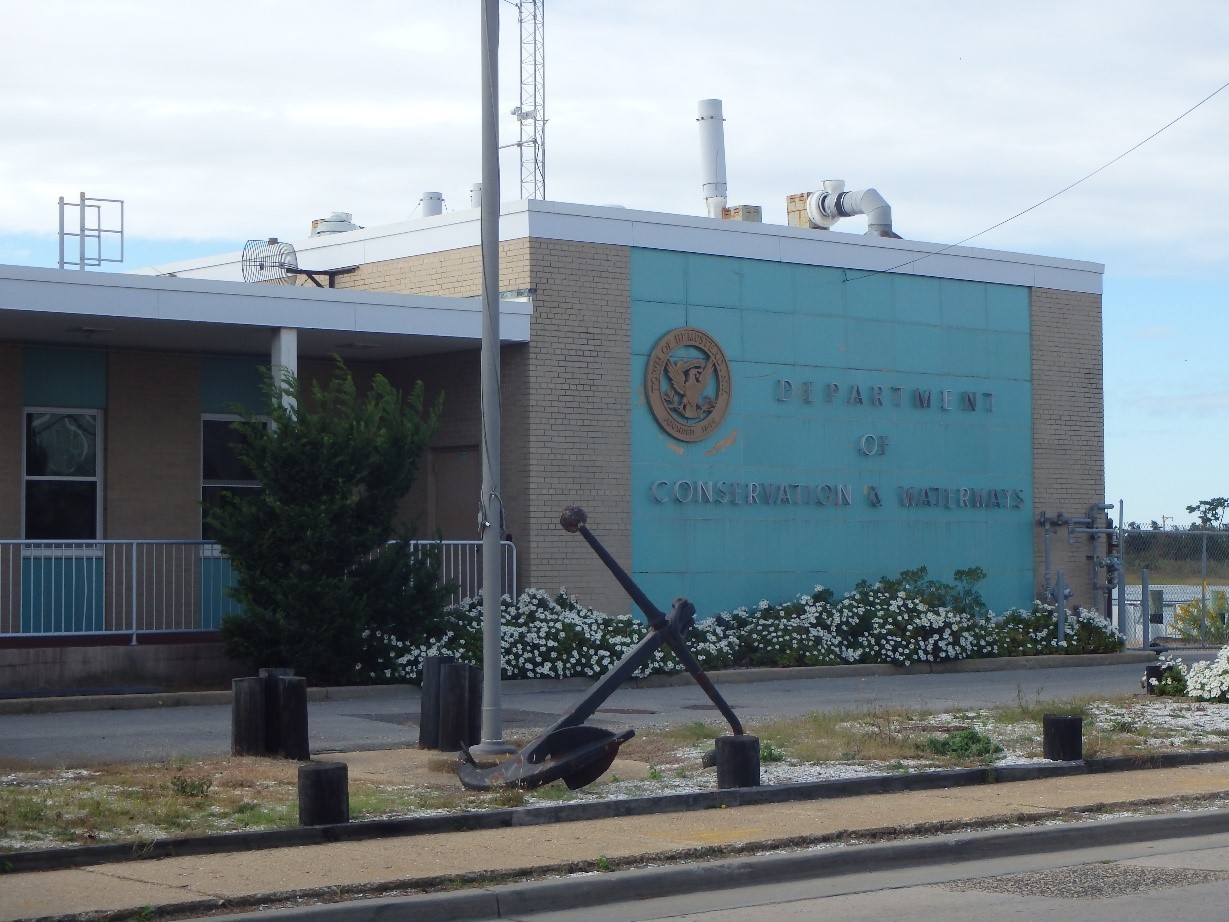Long Island Nitrogen Action Plan (LINAP) - October Newsletter
The New York State Department of Environmental Conservation sent this bulletin on 10/16/2019 12:00 PM EDT |
| DEC Delivers - Information to keep you connected and informed from the NYS Department of Environmental Conservation |
| Share or view as a web page || Update preferences or unsubscribe |
Long Island Nitrogen Action Plan (LINAP) - October Newsletter |
|
In this month's issue of the LINAP newsletter, we highlight recent nitrogen-related stories in the news. In the News:
Governor Cuomo Announces Launch of Innovative Pilot Project to Combat Harmful Algal BloomsOn October 3, Governor Andrew M. Cuomo announced the launch of an innovative new pilot project to fight harmful algal blooms (HABs) and improve water quality in the Village of Southampton's Agawam Lake. The pilot is directed by the New York State Department of Environmental Conservation and the Office of General Services in partnership with the Village of Southampton. The pilot project is part of the State's $82 million initiative to study, respond to and prevent HABs in waterbodies across the state. If the pilot in Agawam Lake proves successful, it will be applied statewide. The Governor launched the HABs initiative in 2018 with $65 million in state funding. "Safeguarding New York's water quality is a top priority and we are providing direct assistance to communities to swiftly and effectively respond to harmful algal blooms," Governor Cuomo said. "We are deploying new and innovative tools like the HABs harvester to address the algal blooms in Agawam Lake, and will continue exploring the latest technology to eliminate these blooms altogether and keep waterbodies around the state clean and safe. If this pilot works, then we will bring it up to scale and apply it across the state wherever possible." 2019 Report Shows Nitrogen Pollution Linked to Sewage Continues to Plague Long Island’s WatersNew research by scientists at Stony Brook University revealed that the impacts of sewage pollution continued to have an adverse impact on Long Island during the summer of 2019. From May through September, every major bay and estuary across Long Island was negatively affected by toxic algae blooms, oxygen starved waters, or both. Heavy loads of nitrogen, mainly from sewage (as well as fertilizers), are widely cited as the leading cause of these alarming events. In addition to the harmful impact on water quality, these events have serious implications for the region’s quality of life, public health and economy. On Long Island, nitrogen pollution has led to the collapse of a multibillion-dollar shellfish industry, rendered seaside communities more vulnerable to violent storms from the loss of seagrass and coastal wetlands and contaminated the Island’s only source of drinking water.
For more information, see the full press release here. Plans to Reopen Town of Hempstead Lab UnderwayState Senator Todd Kaminsky and Town of Hempstead Supervisor Laura Gillen were joined by representatives from the Long Island Regional Planning Council (LIRPC), the Town’s Department of Conservation and Waterways and Hofstra University to provide an update on the progress that has been made to re-open the Town’s water testing laboratory. The lab was shuttered after the damage from Superstorm Sandy was discovered.
Photo Credit: James Browne, Town of Hempstead Department of Conservation & Waterways The lab is being restored with funds from the Town’s five-year capital spending plan and a $350,000 state grant from the Department of Environmental Conservation secured by Senator Todd Kaminsky. The lab is due to reopen by next spring and will play a vital role in a revamped water quality monitoring program that is being developed through a partnership of the LIRPC, Hofstra University and the Town’s Department of Conservation and Waterways. This revamped program – Nassau County Western Bays Water Quality Monitoring Program – will provide a framework for monitoring, analysis, and reporting of water quality within the surface waters of the South Shore Estuary Reserve’s Western Bays and its major tributaries. The lab will not only be an important resource for this program, but it will also support monitoring efforts across the region. Governor Cuomo Signs Legislation that will Allow Sewers to be Built in Kings ParkGovernor Andrew Cuomo recently signed into law a bill needed for the construction of sewers in Kings Park. The law permits Smithtown to transfer a tenth of an acre of land to the County for construction of a sewer pump station. Designs for the pump station are expected to be complete by early November. Costs for the sewer project will be covered by a $20 million grant from the State’s Transformative Investment Program. Sewers will provide added protections to the environment by eliminating antiquated cesspools and septic systems and will also be instrumental in the revitalization of downtown Kings Park. It’s important to note, that the funding for the Kings Park project is in addition to the $390 million awarded to Suffolk County in 2015 through the Governor’s Office of Storm Recovery (GOSR) to install sewers in communities in low-lying, areas along the County’s south shore. These sewer projects are known as the Suffolk County Coastal Resiliency Initiative and will eliminate thousands of cesspools and septic systems to improve water quality, boost economic development and protect against storm surges by strengthening wetlands. To sign up for the LINAP Newsletter, visit the LINAP webpage or click here. |


